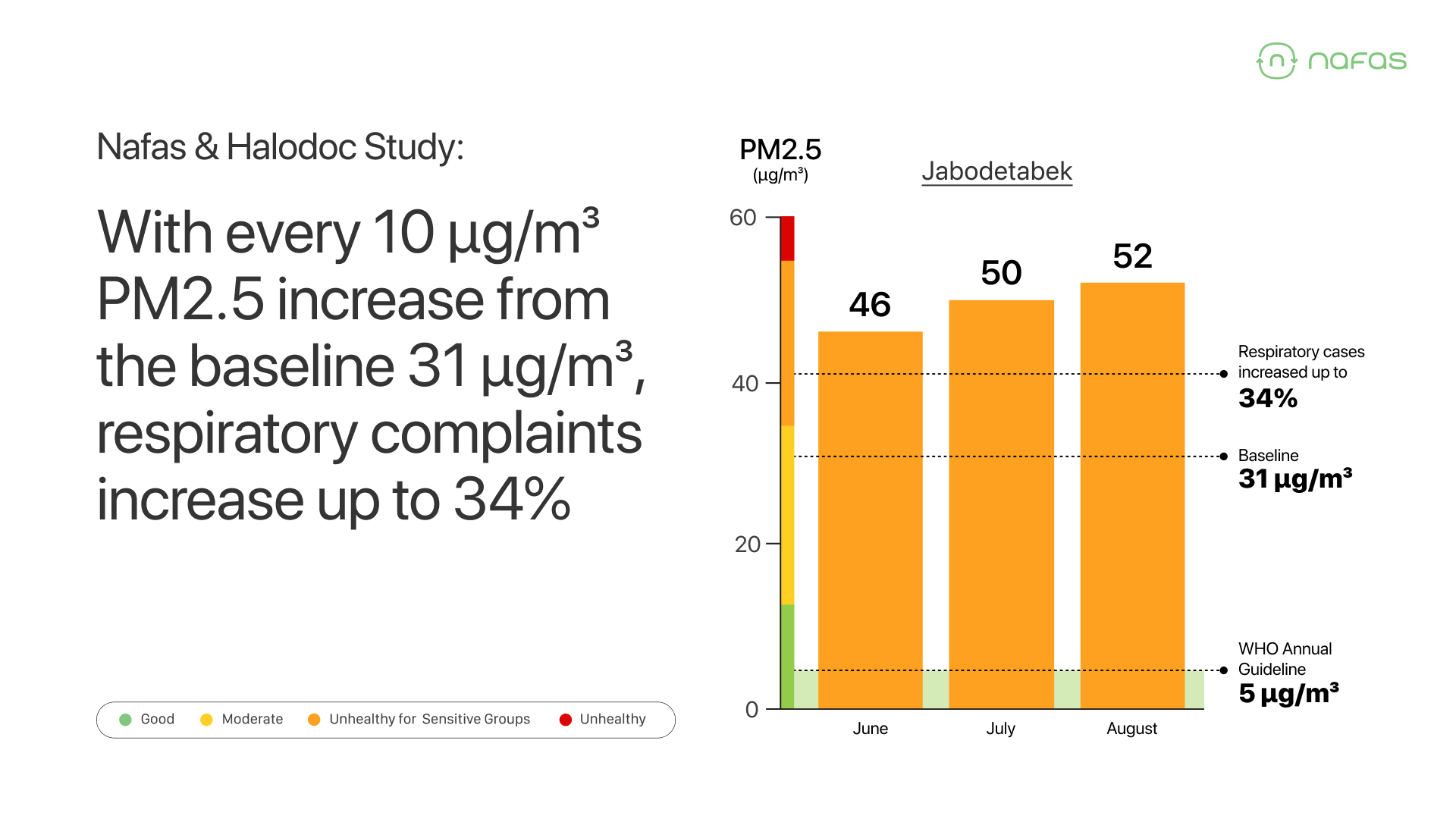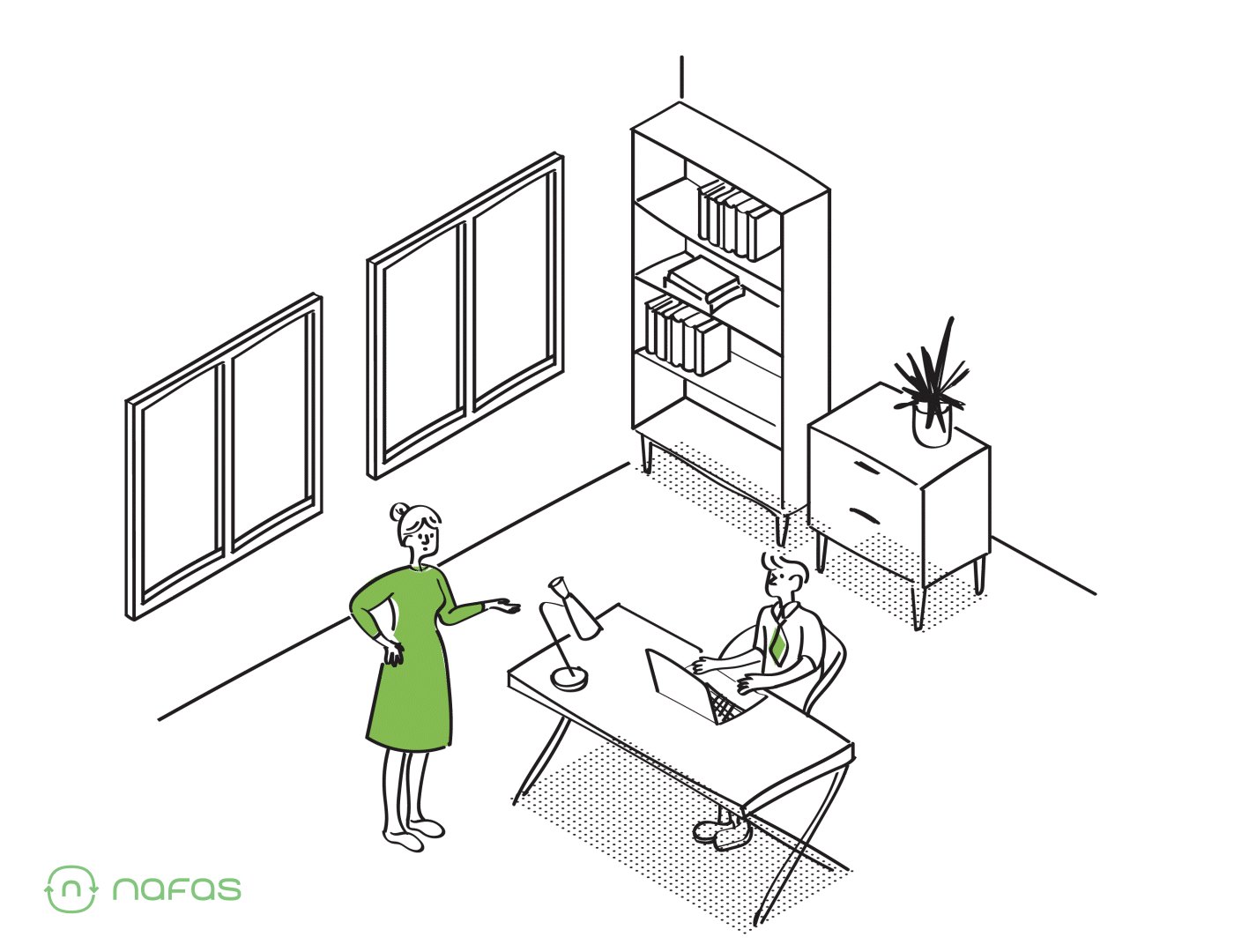Nafas at Bestari Festival 2024: Battling Air Pollution Indoors & Outdoors
On Saturday (01/27), Nafas CEO and co-founder, Nathan Roestandy, had the opportunity to be one of the keynote speakers at the Bestari Festival event organized by Idea Fest and Pandemic Talks. Other initiatives such as Nasi Peda Pelangi and Bicara Udara also contributed to this environmentally-themed event.
Nathan began his keynote speech by discussing the abundance of information circulating these days regarding the climate crisis. This influx of information, he noted, elicits varied responses from the public, with a risk of inducing information overload and subsequent apathy. He urged the audience, "Let's not allow this worrying information overload to make us more apathetic. Let's think about the small things we can do to address these issues in our communities."
Subsequently, Nathan elaborated on the Nafas app, which he conceptualized back in 2021. He positioned Nafas as a kind of Google Maps for air pollution, helping individuals stay vigilant when engaging in outdoor activities.
The motivation behind Nafas, Nathan explained, stemmed from his observation that in other cities and countries, information about air quality is widely available. Detecting air quality, he emphasized, is crucial, as clean air is a basic necessity for every individual worldwide.
Nafas has amassed a significant amount of data and collaborated with various stakeholders. One notable collaboration was a study on the health impacts of air pollution conducted with Halodoc. Nafas provided air quality data, while Halodoc contributed insights from respiratory disease-related teleconsultation sessions. It was found that the long-term health impacts triggered by pollution are substantial, particularly in the Jabodetabek area.

In more detail, it was revealed that for every 10 µg/m³ increase in PM2.5 from the baseline of 31 µg/m³, respiratory complaints rose by 34%. Particularly during the bad air season around June, July, and August, air pollution far exceeded the WHO standard of 5 µg/m³.
This research also uncovered that within 12 hours, the risk of acute respiratory diseases (within 48 hours) can increase by up to 52% if PM2.5 pollution exceeds 55 µg/m³. The diseases with the highest increase were bronchitis & asthma (5 times as many cases), rhinitis (4 times), and influenza & sinusitis (3 times). The most affected groups were children under 6 years old (32%), those aged 6-17 years (32%), and the elderly over 55 years old (48%).

One contributing factor to the increased spread of these diseases is the Sick Building Syndrome, a term used to describe discomfort arising from prolonged exposure to unhealthy indoor environments. This term gained prominence during the COVID-19 era as an airborne disease. Indoor air quality, if not maintained, has implications for both physical and mental health.

Contaminants from outdoor air can enter buildings not designed to cope with high levels of air pollution, with almost 100% of pollutants infiltrating indoor spaces.
In conclusion, Nathan emphasized the importance of healthy indoor air quality. The urgency of improving indoor air quality is crucial and should become a standard to ensure safe and comfortable work, study, and living environments.